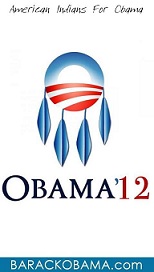Montaigne
Never Give Up!

Edwin Markham said
"Defeat may serve as well as victory to shake the soul and let the glory out."
Hosted free by tripod.com

See the presentation in the Cascade Theatre (Redding) entitled 'Beedi Yalumina: Never Give Up'
Following article by
Tammy Devine, Seven Fires Council
Native American Indians are a people in transition between history and contemporary America. The challenge for Native Americans is to maintain their heritage, erase a stereotype and adjust recognition in society. Native Americans are too often stereotyped by antiquated and discriminatory attitudes which misrepresent valued contributions to America's development and growth. A primary goal of Seven Fires Council (see below) is to educate the public about Native American Indians. [First contact between the incoming Europeans and the original peoples in the "new world" (new to the invading whites) was a mixed story. There was much violence on both sides and history's apportionment of blame is an ongoing challenge. The debate continues. Anthropologists speculate about the advantages of some native traditions, socalled, such as matriarchal upbringing. See article. Euro-civilization needs to face it. There is a basic commonality among all peoples. We all have a "tribal subconscious. Every people has had its growing pains. Teutons were subject to the Romans. Romans began as primitive barbarians. Even the ancient Jews were enslaved in African Egypt. ] [Hostilities of history have often been blown out of proportion. But let us not minimize the sufferings. In fact, truth and reconciliation are often entertwined. Similarly, history tells the story of a reciprocal sharing by both native peoples and the intruding whites, with their missionary zeal at times, or their greed at others. There has been both
good and bad. ] United States Government relations with
Native American Indians began in colonial times and underwent several
substantial changes over the past two centuries. In the late 18th century, the
Continental Congress created Indian Commissioners to oversee trade with Native
American tribes and to improve military relations. As America grew and lands in
the Western part of the United States were explored and inhabited by non - Native
Americans, domestic policy was transformed from one of friendship to one of
force. After the Indian Wars came a period of treaty - making and the development
of Native American reservations primarily in the Western part of the United
States. Tribal governments were broken apart in the late 19th Century only to
be reestablished in the early part of the 20th Century. Under the Indian
Reorganization Act of 1934, the federal government developed policies to
provide financial and technical assistance to tribal groups. These changes
served as the basis for the role played by the U.S. Bureau of Indian Affairs in
the late 20th Century. Today there are over 2 million Native
Americans with about 800,000 living on reservations and 1.2 million residing in
urban areas throughout America. There are approximately 300 Federal Indian
reservations and 500 federally recognized tribes in the U.S. An Indian
reservation is an area of land reserved for Native American use. The term tribe
has had numerous meanings over the years, and today is considered by many to
refer to a distinct group within the Native American culture. One of the primary concerns of Native
American Indians is the question "who is an Indian?" Some individuals and
groups misrepresent the culture, philosophy and spiritual practices of the
Native American, thus perpetuating false stereotypes which are then promoted in
the mass media. Misrepresentation of Native American Indians shows up in
various ways including the use of Indian images and/or tribal names in logos,
on consumer products and as mascots for sports teams. This misrepresentation is
highly offensive and the depiction is racist whether intended or not. Some of
the other common misconceptions and stereotypes about Native American Indians
include the following: The terms and names for Native Americans such as braves, squaws or papooses have been perpetuated by non - Native Americans. The words used for Native American men, women and children are different depending on the Indian language or dialect. Often these words were mistranslated, mispronounced or shortened for the convenience of others. Squaw (or Squay) is an Algonquin word meaning woman. Because it was the practice of the Algonquin, and many other Native American societies to provide physical comfort to guests, the word squaw degenerated in meaning to include prostitute. The term brave was a construct of early American traders referring to Native American men who were well trained and prepared to defend their homeland and families. However, these men had many other responsibilities in their communities besides defense. Papoose was mistranslated from a French word. It originally referred to the cradleboard used by mothers to transport children, but the French referred to the cradleboard and the child together as one
object. Native Americans view harmony with the
earth as part of a religious culture and are extremely aware of the impact
actions have on the environment. Native Americans view the earth as a living
entity, a provider. The spiritual ceremonies of Native Americans are complex
and may be difficult for people outside the culture to understand. These
ceremonies may seem mystical in nature because of annual timing, the use of
ancient symbolism, the incorporation of the earth's gifts and the significant
role of religious leaders.
Pain and Triumph
Identity and misconceptions
All
Native American Men Are Not Called Braves Or Chiefs; Women Are Not Called
Squaws;
And Children Are Not Called Papooses.
Not All
Native American People Are "Mystical, Spiritual Environmentalists"; not all native Medicine Folk are "shamans" or "berdashes"
John Fitzgerald Kennedy
WealthFor centuries, "Old World" countries with warm climates built empires based upon an abundance of grain crops. People survived and prospered through the farming of wheat, rye, barley, and oats in Europe; rice in the East, and millet and sorghum in Africa. Most Native American tribes relied on three basic crops : corn, beans and squash; however, there were over 300 other food crops harvested in the New World, including six. kinds of corn, as well as, sweet potatoes, sunflowers, wild rice, vanilla beans, cocoa or chocolate, a wide variety of nuts, and many varieties of peppers. Today, 60% of the worlds food are of American origin!
GovernmentThe mining of gold and silver, largely with Native American labor, led to rapid economic development and European trade expansion resulting in the Industrial Revolution. Natural resources, including oil, ore, water, timber and other fuels were found primarily on Native American lands. [The gaming controversy continues to divide Native American peoples. See article on indian casinos-gambling. It should be remembered that problem gambling afflicts every ethnicity, even those most blessed with material prosperity.]
Military ServiceThe federal system does not trace its roots to Europe, but rather to Native American tribal organizations. Both Benjamin Franklin and George Washington were extremely knowledgeable about Native American social and political structures. Franklin urged our Founding Fathers to model our government on the League of Iroquois, while the United States Constitution was derived from the Iroquois Kaianerekowa or Great Law of Peace.
MedicinesA high percentage of Native Americans have served in America's wars dating from revolutionary times until today. During World War II for example, 400 Native American men served with distinction as "code talkers" relaying battlefield messages in Athapaskan tongue, a language that Japanese intelligence was unable to decipher even though they were able to interpret every other code the American military used. Code talking was so effective that it was used until 1968. [See Navajo Code Talkers ~ Sam Billison.
Earth WisdomTribal usage gives the concept of "medicine" an overlap with what white culture refers to as spiritual wisdom. But white "medicine" has borrowed heavily from Native American herbal wisdom. Native American Indians provided quinine as the first effective treatment of malaria and utilized many plants that have resulted in remarkable contributions to 20th century medicine including aspirin - related tree bark extracts, laxatives, painkillers, antibacterial medicines, petroleum jelly and others.
Not All Native Americans Wear WarbonnetsNative Americans have a fundamental respect for preserving the environment even as technology and growth rapidly expand our world. [The modern world should heed the warnings of native prophets and spiritual voices, such as Kate Luckie.] Earth wisdom is a gift from the Native Americans to be embraced for future survival. Native Words From Long Ago.
Not All Native Americans Greet Each Other By Saying "HOW"The warbonnet was originally made from Golden Eagle feathers and was developed by Native American nations living west of the Mississippi River. Each feather in a warbonnet represents an honorable act that its wearer has accomplished while defending his home or nation. Most Native American men have head wear that is representative of their tribal affiliation, ranging from cloth, to elaborately decorated reed or feather hats.
Not All Native Americans Wear FeathersMany Native American languages or dialects require the use of sounds that are not produced in the English language. These sounds are usually made at the back of the throat or through the nasal passages and they communicate wordless expressions of approval, disapproval, joking, or acknowledgment. Today there are some 200 tribal languages, and no group of words are common to all of them. However, almost all Native Americans use the English language for communicating with non-tribal people.
Not All Native Americans Are AlcoholicsFeathers of certain birds are sometimes worn as part of a spiritual ceremony of dance. The powers of these birds are believed to be invoked through spiritual ceremony.
Not All Native Americans Live On Reservations or "OUT WEST"Early traders and government agencies manipulated Native American individuals and communities by encouraging consumption of alcohol and hence the debilitating impact of alcohol became wide spread. Alcoholism continues to be a major problem among Native American people, though clearly not all drink alcohol, and most Native American communities frown upon its consumption. Substance abuse programs that include treatment which is sensitive to the background and history of the Native American community need to be further developed.
Native Americans Are Not DishonestMost media images and history books about Native Americans suggest that all Indians are living in the Western U.S. on reservations, when a majority actually live in urban areas throughout the United States. These published images usually ignored the Native Americans who resided east of the Mississippi River in the early 19th Century, surviving the slave trade, disease and land grabbing immigrants.
Native Americans Are Business OwnersThe false image regarding honesty has unfortunately been caused by media exploitation of popular Indians. The historical roots of this misconception date back to the early explorers who destroyed the integrity and character of Native Americans by portraying them as dishonest. Many of the treaties established between the Indian Nations and the United States were broken, not by the Native American peoples, but by the Federal Government.
Native Americans Are Not Primitive And UneducatedThe misconception that Native Americans are not business owners was created by the stereotyping of Indians in early television and film. There are many Native American entrepreneurs in business ranging from grocery stores and multi -million dollar casinos to tourism and natural resource management.
Tammy Devine, Seven Fires Council, 675 Mallard Cove, Harrodsburg, KY 40330Traditional Native American values emphasize simplicity in daily living. However, that is not commensurate with "primitive." Most Native Americans are educated at the secondary school level, and many obtain higher education degrees at the finest universities in the United States becoming physicians, lawyers and college professors.



Site Maintained by
last save 03.31.15
Robert Shepherd